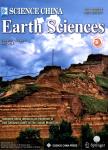Lake sediment records on climate change and human activities since the Holocene in Erhai catchment, Yunnan Province, China
Lake sediment records on climate change and human activities since the Holocene in Erhai catchment, Yunnan Province, China作者机构:Geology Institute Tokyo University Tokyo 113 Japan
出 版 物:《Science China Earth Sciences》 (中国科学(地球科学英文版))
年 卷 期:2005年第48卷第3期
页 面:353-363页
核心收录:
学科分类:070903[理学-古生物学与地层学(含:古人类学)] 0709[理学-地质学] 07[理学] 0708[理学-地球物理学] 0704[理学-天文学]
基 金:This work was Supported by the Chinese Academy of Sciences(Gant Nos.KZCX2-SW-118,and KZCX1-10-01) Leverhulme Tnust grant F00025/E
主 题:climate change, human activity, Holocene, lake sediment, Erhai Lake in Yunnan Province.
摘 要:According to high-resolution analyses on multi-proxy of sediment core from the Er- hai Lake, Yunnan Province, the sequence of climatic and environmental change since the Holo- cene has been reconstructed based on accurate dating. The results show that climate had tran- sited from cold-wet to warm-wet during ca. 12950-8399 aBP in this area, and the transition happened in ca. 10329 aBP. Due to the enhancing southwest Asian monsoon and increasing precipitation, the lake-level of the Erhai Lake began to rise after ca. 10329 a BP. Climate in the catchment was warm and wet during the mid-Holocene, and the warmest stage appeared in ca. 8399-6371 a BP. The lake-level descended in the mid-Holocene because of the decrease of effective moisture in the basin. Human activities appeared in ca. 6371 a BP, and the initial man- ner mainly focused on deforestation. Up to ca. 2139 a BP, due to the amount of immigration into this area, the cultivation was developed widely, which was followed by mining (coal mine).



